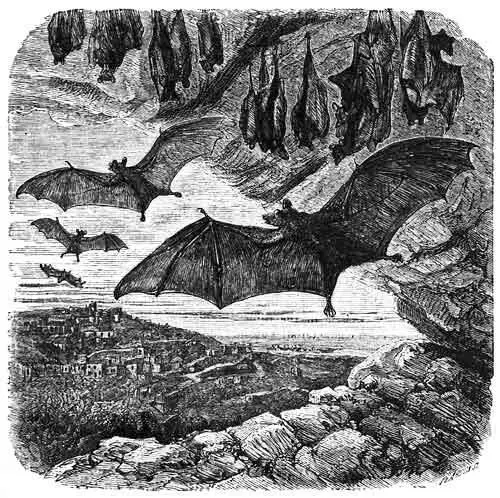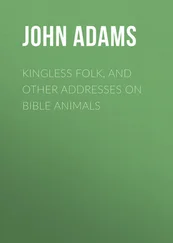John George Wood - Bible Animals
Здесь есть возможность читать онлайн «John George Wood - Bible Animals» — ознакомительный отрывок электронной книги совершенно бесплатно, а после прочтения отрывка купить полную версию. В некоторых случаях можно слушать аудио, скачать через торрент в формате fb2 и присутствует краткое содержание. Жанр: foreign_prose, foreign_religion, Философия, foreign_psychology, foreign_antique, на английском языке. Описание произведения, (предисловие) а так же отзывы посетителей доступны на портале библиотеки ЛибКат.
- Название:Bible Animals
- Автор:
- Жанр:
- Год:неизвестен
- ISBN:нет данных
- Рейтинг книги:3 / 5. Голосов: 1
-
Избранное:Добавить в избранное
- Отзывы:
-
Ваша оценка:
- 60
- 1
- 2
- 3
- 4
- 5
Bible Animals: краткое содержание, описание и аннотация
Предлагаем к чтению аннотацию, описание, краткое содержание или предисловие (зависит от того, что написал сам автор книги «Bible Animals»). Если вы не нашли необходимую информацию о книге — напишите в комментариях, мы постараемся отыскать её.
Bible Animals — читать онлайн ознакомительный отрывок
Ниже представлен текст книги, разбитый по страницам. Система сохранения места последней прочитанной страницы, позволяет с удобством читать онлайн бесплатно книгу «Bible Animals», без необходимости каждый раз заново искать на чём Вы остановились. Поставьте закладку, и сможете в любой момент перейти на страницу, на которой закончили чтение.
Интервал:
Закладка:
We will now proceed to the Mahommedan legend, as it is given by S. Pierotti: "In this wild spot the great prophet Isa retired with his disciples to keep the holy month of the Ramadhan, afar from the tumults of the world. As the view westward was obstructed by the mountains of Jerusalem, and, consequently, the sunset could not be seen, he made, by the permission of God, an image in clay representing a winged creature; and, after invoking the aid of the Eternal, breathed upon it. Immediately it flapped its large wings, and fled into one of the dark caverns in the mountains. This creature was the Khopash (bat), which lies hid so long as the sun shines upon the world, and comes forth from its retreat when it sets. Every night, at the Moghreb, i.e. at the moment of breaking the fast, this bat fluttered round Isa, who then prepared himself with his disciples for prayer.
"As soon as they had performed this sacred duty, the Merciful caused to descend from heaven a silver table, covered with a cloth whose brilliancy illumined the darkness, on which were placed a large roasted fish, five loaves, salt, vinegar, oil, pomegranates, dates, and fresh salad, gathered in the gardens of heaven. On these the Prophet supped, and the angels of heaven ministered at table."
This curious legend bears a great resemblance to the tales which are told of our Lord's childhood in some of the spurious gospels. It shows that both emanated from the same class of mind. In both is seen a strange mixture of vivid imagination contrasted with unexpected and almost puerile lack of invention; and, in both is exhibited a total failure in apprehension of cause and effect. Indeed, it is evident that this legend was the work of a comparatively modern Mahommedan story-teller, who appropriated the forty days' fast of our Lord from the true gospels, and the making of a flying creature of clay from the false, and modified them both to suit the purposes of his tale.
No particular species of Bat seems to be indicated by the Hebrew word Hatalleph, which is evidently used in a comprehensive sense, and signifies all and any species of Bat. Until very lately, the exact species of Bats which inhabit Palestine were not definitely ascertained, and could only be conjectured. But, Mr. Tristram, who travelled in the Holy Land for the express purpose of investigating its physical history, has set this point at rest, in his invaluable work, "The Land of Israel," to which frequent reference will be made in the course of the following pages.
Almost every cavern which he entered was tenanted by bats, and he procured several species of these repulsive but interesting animals. While exploring the vast prairies in which the stone for the Temple was worked beneath the earth, so that no sound of tool was heard during the building, numbers of bats were disturbed by the lights, and fluttered over the heads of the exploring party.
On another occasion, he was exploring a cave near the centre of Palestine, when he succeeded in procuring some specimens, and therefore in identifying at least one species. "In climbing the rocks soon afterwards, to examine a cave, I heard a singular whining chatter within, and on creeping into its recesses, a stone thrown up roused from their roosting-places a colony of large bats, the soft waving flap of whose wings I could hear in the darkness. How to obtain one I knew not; but on vigorously plying my signal whistle, all the party soon gathered to my help. B. suggested smoking them, so a fire of brushwood was kindled, and soon two or three rushed out. Two fell to our shot, and I was delighted to find myself the possessor of a couple of large fox-headed bats of the genus Pteropus ( Xantharpya ægyptiaca ), and extending twenty and a half inches from wing to wing. As none of the bats of Palestine are yet known, this was a great prize, and another instance of the extension westward of the Indian fauna." These Bats belong to the fruit-eating tribe, and are closely allied to the Flying Foxes of Java, Australia, and Southern Africa. Therefore, this would be one of the species commonly used for food, and hence the necessity for the prohibition. The present species extends over the greater part of Northern Africa and into parts of Asia.
The same traveller subsequently discovered several more species of bats. On one occasion, he was exploring some caves, near the site of the ancient Jericho. On the eastern face of the cliffs are a number of caves, arranged in regular tiers, and originally approached by steps cut out of the face of the rock. These staircases are, however, washed away by time and the rains, and in consequence the upper tiers were almost inaccessible. In some of these caves the walls were covered with brilliant, but mutilated frescoes; and in others, hermits had lived and died and been buried. Mr. Tristram and his companions had penetrated to the second tier, and there made a curious discovery.
"In the roof of this was a small hole, athwart which lay a stick. After many efforts, we got a string across it, and so hauled up a rope, by which, finding the stick strong enough, we climbed, and with a short exercise of the chimney-sweeper's art, we found ourselves in a third tier of cells, similar to the lower ones, and covered with the undisturbed dust of ages. Behind the chapel was a dark cave, with an entrance eighteen inches high. Having lighted our lantern, we crept in on our faces, and found the place full of human bones and skulls; with dust several inches deep. We were in the burying-place of the Anchorites. Their bones lay heaped, but in undisturbed order, probably as the corpses had been stretched soon after death, and as in the campo-santo of some Italian monasteries, had been desiccated, and in the dry atmosphere had gradually pulverized. The skeletons were laid west and east, awaiting the resurrection. After capturing two or three long-tailed bats, of a species new to us ( Rhinopoma microphylla ), the only living occupants, we crept out, with a feeling of religious awe, from this strange sepulchral cave." This bat is called the Egyptian Rhinopome, and the same species of Bat was found in considerable numbers in the cave at Es Sumrah. Three more species were found in the tombs of the kings, and it is probable that many other species inhabit Palestine. It is certain, at all events, that representatives of three more families of Bats inhabit Egypt, and therefore are most probably to be found in Palestine.

THE BAT.
" The Lapwing and the Bat are unclean. "—Lev. xi. 19.
THE LION
Frequent mention of the Lion in the Scriptures—Probability that it was once a common animal, though now extinct—Reasons for its disappearance—The Lion employed as an emblem in the Bible—Similarity of the African and Asiatic species—The chief characteristics of the Lion—its strength, activity, and mode of seizing its prey—Various names of the Lion—its courage when roused—its roar and peculiar mode of utterance—Invisibility of the Lion at dusk—The Lion lying in wait—The dwelling-place of the Lion—Its restlessness at night—Passages illustrative of these characteristics—Modes of capturing the Lion—The pitfall and the net—Lions kept as curiosities—The Lion hunt as depicted, on the buildings of ancient Nineveh.
Of all the undomesticated animals of Palestine, none is mentioned so frequently as the Lion. This may appear the more remarkable, because for many years the Lion has been extinct in Palestine. The leopard, the wolf, the jackal, and the hyæna, still retain their place in the land, although their numbers are comparatively few; but the Lion has vanished completely out of the land. The reason for this disappearance is twofold, first, the thicker population; and second, the introduction of firearms.
Читать дальшеИнтервал:
Закладка:
Похожие книги на «Bible Animals»
Представляем Вашему вниманию похожие книги на «Bible Animals» списком для выбора. Мы отобрали схожую по названию и смыслу литературу в надежде предоставить читателям больше вариантов отыскать новые, интересные, ещё непрочитанные произведения.
Обсуждение, отзывы о книге «Bible Animals» и просто собственные мнения читателей. Оставьте ваши комментарии, напишите, что Вы думаете о произведении, его смысле или главных героях. Укажите что конкретно понравилось, а что нет, и почему Вы так считаете.












